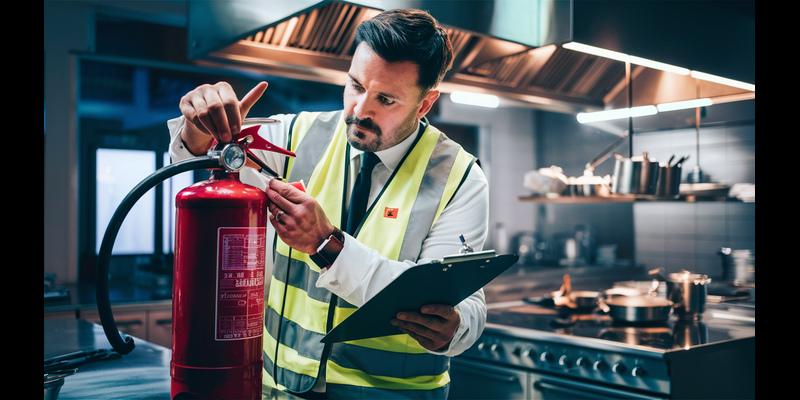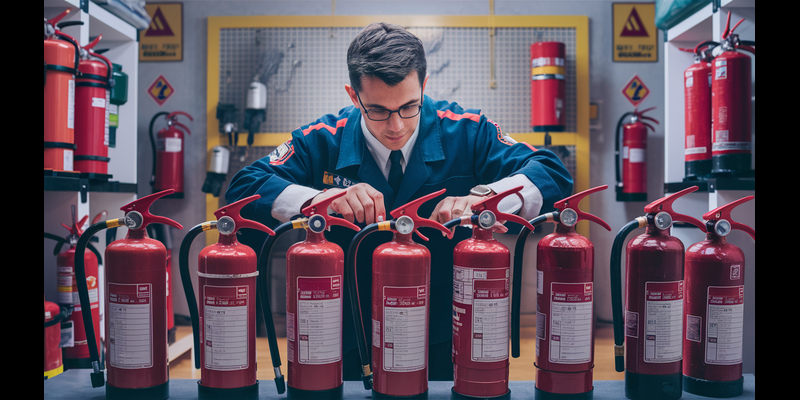Do you recall, if there were red canisters hanging on the walls of the building? These are fire extinguishers and indeed they are superheroes that are held back in case of outbreaks of fire. However, just as superheroes will probably remain in good physical condition, fire extinguishers also require check-ups. These inspection helps ensure that the fire extinguishers are working as supposed when they are required.
In this blog, we will discuss fire extinguisher inspections, further reading will help to understand why they are crucial, what procedure is applied during the inspections, and how often they should be carried out.
Why Fire Extinguisher Inspections is important?
Regular inspections are critical for numerous reasons:
- Safety: A well-functioning fire extinguisher can save lives and property.
- Legal compliance: Many jurisdictions require regular fire extinguisher inspections.
- Insurance requirements: Your coverage policy may mandate regular inspections.
- Early problem detection: Inspections can pick out problems before they emerge as critical.
- Cost-effectiveness: Regular protection can increase the life of your fire extinguishers.

Types of Fire Extinguisher Inspections
There are 3 main types of Fire Extinguisher Inspections.
1) Monthly Visual Inspections
These short tests may be done with the aid of building owners or designated employees. Monthly Fire Extinguisher Inspection involves:
- Ensuring the extinguisher is seen and reachable
- Checking that the stress gauge is inside the operational range
- Inspecting for physical damage or corrosion
- Verifying that the protection seal is unbroken
- Checking that working commands are legible
2) Annual Maintenance Inspections
These extra thorough fire extinguisher inspection service have to be carried out via a certified expert. They encompass:
- Checking the extinguisher’s internal and external circumstance
Verifying that each component are present and in a suitable situation
- Weighing the extinguisher to make sure it’s absolutely charged
- Checking the pressure and changing the tamper seal
- Updating the inspection tag
3) Internal Maintenance (Every 5-12 Years)
These in-intensity Fire Extinguisher Inspections involve:
- Emptying and disassembling the extinguisher
- Examining all inner components
- Replacing any worn or broken parts
- Recharging and reassembling the extinguisher
The frequency of inner maintenance relies upon the type of extinguisher:
- Stored pressure extinguishers: Every 6 years
- Carbon dioxide extinguishers: Every five years
- Wet chemical extinguishers: Every 5 years
What to Expect During a Professional Inspection?
When you schedule an expert fire extinguisher inspection, right here’s what generally takes place:
- Visual exam: The inspector assesses for outside damage, corrosion, or tampering.
- Pressure test: They verify that the stress gauge studying is inside the perfect variety.
- Seal inspection: The inspector tests that the protection seal and tamper indicators are intact.
- Obstruction check: They make certain the nozzle isn’t clogged or obstructed.
- Operating instructions: The legibility and presence of instructions are confirmed.
- Service facts: The inspector’s opinions and updates the extinguisher’s provider data.
- Recharging or substitute: If important, the extinguisher is recharged or changed.
- Documentation: The inspection is documented, and a brand-new inspection tag is connected.

DIY vs. Professional Fire Extinguisher Services
While monthly visual Fire Extinguisher Services may be achieved in-house. It’s important to have a certified expert conduct annual maintenance and inner inspections. Here’s why:
- Expertise: Professionals are trained to spot ability problems that untrained individuals might miss.
- Equipment: Proper inspection and protection require specialized gear and devices.
- Compliance: Professional inspections ensure you meet legal and coverage necessities.
- Liability: If an improperly maintained extinguisher fails during an emergency, it can lead to legal issues.
- Time and price-effectiveness: Professional offerings can save you time and money in the long run.
Choosing a Fire Extinguisher Service Provider
When choosing a corporation for Fire Extinguisher Services and offerings, recollect:
- Certifications: Ensure they’re licensed by using identified groups like NFPA or NAFED.
- Experience: Look for agencies with an established track record in fire protection offerings.
- Range of services: Choose a provider that can handle all your fire safety desires.
- Response time: In emergencies, quick service can be essential.
- Customer opinions: Check on-line reviews and ask for references.
- Insurance: Verify that the organization is well insured.
- Pricing: While price is important, don’t compromise on best for a lower charge.
Best Practices for Fire Extinguisher Maintenance
In addition to Fire Extinguisher Services inspections, comply with these high-quality practices:
- Train employees on the right fire extinguisher use.
- Keep extinguishers easily accessible and simply marked.
- Ensure extinguishers are suitable for the kinds of fires even in every region.
- Replace extinguishers straight away after use, although they’re no longer completely discharged.
- Keep specific records of all inspections and maintenance.
- Develop a fire safety plan that consists of extinguisher places and utilization recommendations.
Conclusion
Probably you have planned to consult how fire extinguishers can be incorporated into your complete fire protection service plan. Well, fire extinguisher inspections are a component of this plan. To make sure that your fire extinguishers are constantly prepared whilst you want, via knowing the sorts of inspections, what they contain and the importance of professional offerings, you’ll be ready when you need them.
Do not forget that a fire extinguisher that is fine-tuned will not be just a legal requirement but is one of the most important fire-fighting tools that can save lives and preserve your home.
Read Also @ The Importance of Regular Fire Safety Inspections for Your Business
